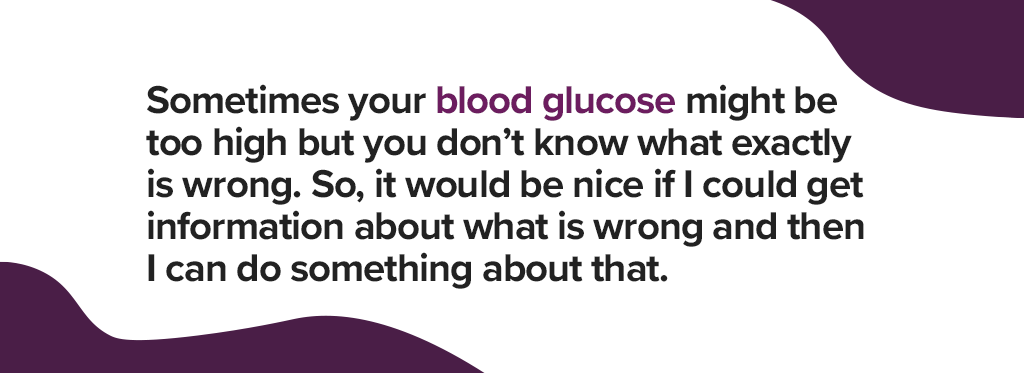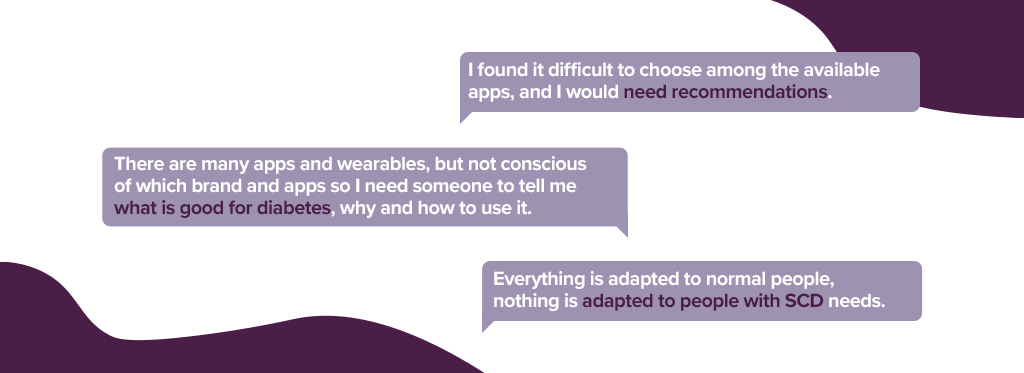When I recently spoke about mHealth with one of our mobile experts, I noticed that our perspectives are entirely different. My interlocutor, who is a very experienced software developer, concentrated mainly on technological aspects and the business side, while I, a full-blooded UX designer, was (unsurprisingly) more interested in the end user’s experience.
The discussion turned out not only to be extremely interesting and entertaining but also inspired me to give this topic some more thought and analyze it from a detailed perspective.
What I was especially interested in was to establish what features and functionalities a mHealth product needs to be successful. Or, strictly speaking – what motivates consumers to use mobile health solutions.
So, I decided to dive deep into end-user motivations… and forced my intuition aside! After all, the key tool of a UX designer is research.
But First: What Is Mobile Health, Precisely?
Interestingly, the term mHealth has its own official World Health Organization (WHO) definition: it means using mobile wireless technologies in support of health and health-related fields.
The article What is the clinical value of mHealth patients? offers a more detailed description. The authors divide mobile health into:
- supporting clinical diagnosis and decision making;
- improving clinical outcomes from established treatment pathways through behaviour change and enhancement of patient adherence and compliance with treatment;
- acting as standalone digital therapeutics; and
- delivering disease-related education.
Other scientific studies also include two following categories: fitness (sport) and wellness (relaxation and meditation).
So, What’s Crucial to Attract Users?
My intuition told me that regardless of the target group, data safety will be essential. I also suspected that the fundamental design characteristics should include the reliability of the information, ease of use, and simplicity.
But, again, this was only my gut feeling. Did facts confirm it?
First Research Article: Motivational Factors for User Engagement with mHealth Apps
This Norwegian article was the first analysis I looked into. I instantly knew it would offer a valuable perspective because it included direct quotes from user interviews. Such quotes provide additional detail and first-hand information about motivation, articulating needs and the point-of-view. This knowledge, so-called insights, often has an enormous impact on the shape and strategy of the final product.
Needless to say, it’s priceless.
The article concentrated on two mHealth target groups – people who are chronically ill (diabetics and those suffering from sickle cell anaemia) and physically active people.
As the analysis explains, the key motivator behind using mobile health products (in this case, apps or corresponding monitoring devices) is the required time to learn how to use them. Equally important are the confidentially of data, trustworthiness, and substantive, valuable analysis of the data.
The latter is well-illustrated by this quote:


Also Important: mHealth… Gamification?
Yes! Surprisingly, users declared that they find mHealth gamification very attractive – especially quizzes or result comparisons.
On the other hand, the physically active users also declared a dislike for insistent social media integration. Certain mobile health apps frequently tried to convince them to share their results on social media channels. The target group viewed this as a waste of time – as it turned out, athletic people are rarely motivated by showing off their statistics.
The Second Target Group Sees it Differently
In contrast, the chronically ill praised social media functionalities. They declared that seeing how others keep their diet and physical activity motivates them to maintain regularity. More importantly, they emphasized that high quality of information was crucial – and not always the standard due to social media chaos.
This discrepancy between the two groups serves as a great example of how important it is to include feedback from target groups during (or even before) development.
Overall, the Motivational Factors for User Engagement with mHealth Apps turned out to be a useful starter. It’s only a shame the research didn’t look deeper into the intrusive solution that a user mentioned in one of the interviews:


Second Research Article: Motivational Factors for User Engagement with mHealth Apps
The second article I analyzed was entitled Expectations from Personal mHealth Apps through Kano’s Model by Süleyman Barutçu (head researcher) from the Turkish university Pamukkale. Although it’s not new (it’s from December 2018), it proved to be immensely insightful.
This article (as the name suggests, supported by Kano’s Model – a robust methodology), is an upright elaboration of 317 questionnaires filled out by Pamukkale University students. The research analyzed 22 potential functionalities and divided them into 3 groups.
Here’s a detailed look into all the categories.
Crucial
According to the research, users said they value:
- receiving medical recommendations about their health situation,
- being notified about the results of medical tests,
- being reminded when it’s time to take their medicine,
- indicating which medication they may be allergic to,
- personal data protection,
- storing information about their health situation, which may turn out to be essential in emergencies,
- a practical menu (but it’s not stated what that actually means),
- receiving reminders about upcoming medical examinations.
Generally, this research also emphasizes the importance of data protection (which I mentioned before), usability, overall safety and consistency in treatment.
Beneficial
The above factors are considered "must-haves" of successful mHealth solutions. But there’s also another relevant category: "nice-to-haves".
These are useful features that raise user satisfaction – but their absence has no negative impact.
For example, this includes:
- dietetic recommendations regarding a diagnosed illness,
- monitoring health indicators with smartphone sensors,
- sending messages to general practitioners,
- highlighting available health institutions in the area,
- writing comments about health services,
- sharing experience with other patients who have similar problems.
Not Important
There’s also a 3rd category: features that are… negligible.
Among these are:
- a list of previously prescribed medication,
- registering physical activity,
- suggesting vaccination based on age and the overall health situation,
- sending messages with general health advice,
- video calls for medical inspections (mainly after surgery).
If any of the above surprised you, it proves that crucial point – asking users about their preferences is a fundament of successful user experience. Even the best gut feeling is rarely enough.
I also recommend this article to every company that’s interested in conducting their mobile health research – it serves as a great guide on how to perform it on your own.
It’s All in the Eye of the Beholder
The usefulness of any of the mentioned features depends on the target group. For example, although registering physical activity was listed above as not necessary – and it’ll be useless to somebody who’s undergoing chemotherapy – it may be a pivotal functionality to a fitness enthusiast.
Both mentioned articles cover quite specific target groups which are only a small segment of all potential mHealth users. For example, they didn’t include professional athletes, sports hobbyists or… pets. The list of possible mobile health consumers is extensive.
This inevitably leads to the conclusion that mHealth solutions are especially sensitive regarding target groups. Before you start developing your solution, you should segment your potential users. Performing In-Depth Interviews (IDI) and contextual interviews is essential.
Don’t merely copy existing features – at least not without a strong reason. As the mentioned articles illustrate, what’s right for one target group may be useless to others. The mobile health industry is too voluminous to work on clichés.
And here are a few quotes to point you in the right direction:


Sources
What is the clinical value of mHealth for patients?
Motivational Factors for User Engagement with mHealth Apps
Expectations from Personal mHealth Apps through Kano’s Model





